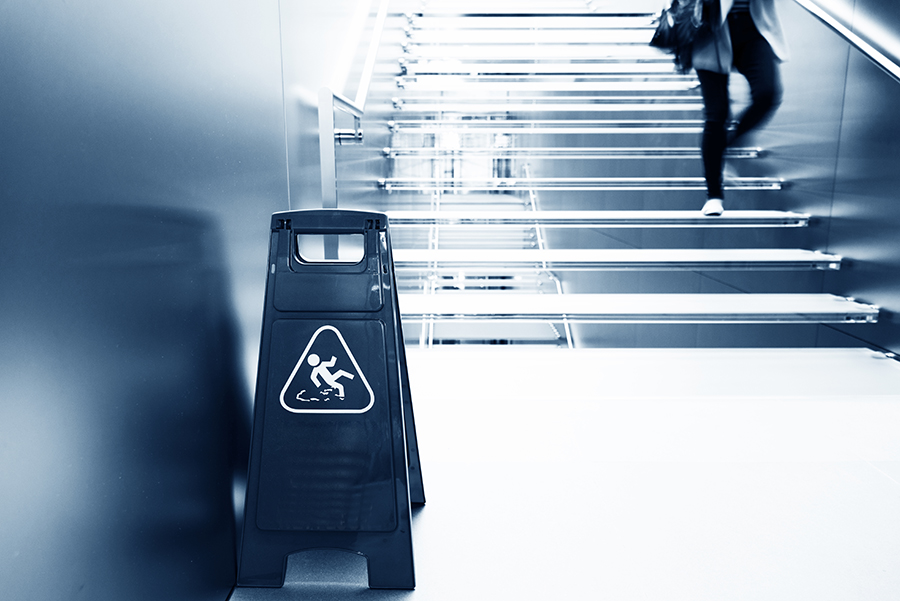Imagine you’re driving along the highway, and see an electric sign saying “79 traffic deaths this year.” Would this make you less likely to crash your car shortly after seeing the sign? Perhaps you think it would have no effect?
Neither are true. According to a recent peer-reviewed study that just came out in Science, one of the world’s top academic journals, you would be more likely to crash, not less. Talk about unintended consequences!
The study examined seven years of data from 880 electric highway signs, which showed the number of deaths so far this year for one week each month as part of a safety campaign. The researchers found that the number of crashes increased by 1.52% within three miles of the signs on these safety campaign weeks compared to the other weeks of the month when the signs did not show fatality information.
That’s about the same impact as raising the speed limit by four miles or decreasing the number of highway troopers by 10%. The scientists calculated that the social costs of such fatality messages amount to $377 million per year, with 2,600 additional crashes and 16 deaths.
The cause? Distracted driving. These “in-your-face” messages, the study finds, grab your attention and undermine your driving. In other words, the same reason you shouldn’t text and drive.
Supporting their hypothesis, the scientists discovered that the increase in crashes is higher when the reported deaths are higher. Thus, later in the year as the number of reported deaths on the sign goes up, so does the percentage of crashes. And it’s not the weather: the effect of showing the fatality messages decreased by 11% between January and February, as the displayed number of deaths resets for the year. They also uncovered that the increase in crashes is largest in more complex road segments, which require more focus from the driver.
Their research also aligns with other studies. One proved that increasing people’s anxiety causes them to drive worse. Another showed drivers fatality messages in a laboratory setting and determined that doing so increased cognitive load, making them distracted drivers.
If the authorities actually paid attention to cognitive science research, they would never have launched these fatality message advertisements. Instead, they relied on armchair psychology and followed their gut intuitions on what should work, rather than measuring what does work. The result was what scholars call a boomerang effect, meaning when an intervention produces an effect opposite to that intended.
Unfortunately, such boomerang effects happen all-too-often. Consider another safety campaign, the National Youth Anti-Drug Media Campaign between 1998 and 2004, which the US Congress funded to the tune of $1 billion. Using professional advertising and public relations firms, the campaign created comprehensive marketing efforts that targeted youths aged 9 to 18 with anti-drug messaging, focusing on marijuana. The messages were spread by television, radio, websites, magazines, movie theaters and other venues, and through partnership with civic, professional, and community groups, with the intention for youths to see two to three ads per week.
A 2008 National Institutes of Health-funded study found that indeed, youths did get exposure to two to three ads per week. However, on the whole, more exposure to advertising from the campaign led youth to be more likely to use marijuana, not less!
Why? The authors find evidence that youths who saw the ads got the impression that their peers used marijuana widely. As a result, the youths became more likely to use marijuana themselves. Indeed, the study found that those youths who saw more ads had a stronger belief that other youths used marijuana, and this belief made starting to use marijuana more likely. Talk about a boomerang effect!
Of course, it’s not only government authorities whose campaigns suffer from boomerang effects. Consider Apple’s recent highly popular “Apple at Work” advertising campaign. Its newest episode, launched in March 2022, is called “Escape from the Office.” It features a group of employees who, when told they must come back to the office as the pandemic winds down, instead chose to quit and launched an office-less startup using Apple products.
A week before the launch of its ad campaign extolling remote work and slamming the requirement to return to the office, Apple demanded that its own employees return to the office. That juxtaposition did not play well with the 7,500 of Apple’s 165,000 employees who are part of an Apple Slack room for remote work.
One employee wrote “They are trolling us, right?” and others termed the ad “distasteful” and “insulting.” After all, the ad illustrates how Apple helps corporate employees work from home effectively. Why can’t Apple’s own staff do so, right? That hypocrisy added to the frustration of Apple employees, with some already quitting. Again, a clear boomerang effect at play.
We know that message campaigns – whether on electric signs or through advertisements – can have a substantial effect. That fits broader extensive research from cognitive science on how people can be impacted by nudges, meaning non-coercive efforts to shape the environment so as to influence people’s behavior in a predictable manner. For example, a successful nudging campaign to reduce car accidents involved using smartphone notifications that helped drivers evaluate their performance during each trip. Using nudges informing drivers of their personal average performance and personal best performance, as measured by accelerometers and gyroscopes, resulted in a reduction of accident frequency of over one and a half years.
Those with authority – in government or business – frequently attempt to nudge other people based on their mental model of how others should behave. Unfortunately, their mental models are often fundamentally flawed, due to dangerous judgment errors called cognitive biases. These mental blindspots impact decision making in all life areas, including business to relationships. Fortunately, recent research has shown effective strategies to defeat these dangerous judgment errors, such as by constraining our choices to best practices and measuring the impact of our interventions.
Unfortunately, such reliance on best practice and measurements of interventions of such techniques is done too rarely. Fatality signage campaigns have been in place for many years without assessment. The federal government ran the anti-drug campaign from 1998 to 2004 until finally the measurement study came out in 2008.
Instead, what the authorities need to do is consult with cognitive and behavioral science experts on nudges before they start their interventions. And what the experts will tell you is that it’s critical to evaluate in small-scale experiments the impact of proposed nudges. That’s because, while extensive research shows nudges do work, only 62% have a statistically significant impact, and up to 15% of desired interventions may backfire.
Nonetheless, Texas, along with at least 28 other states, has pursued mortality messaging campaigns for years, without testing them effectively by behavioral scientists Behavioral science is critical here: when road signs are tested by those without expertise in how our minds work such as engineers, the results are often counterproductive. For example, a group of engineers at Virginia Tech did a study of road signs that used humor, popular culture, sports, and other nontraditional themes with the goal of provoking an emotional response. They measured the neuro-cognitive response of participants who read the signs and found that messages “messages with humor, and messages that use word play and rhyme elicit significantly higher levels of cognitive activation in the brain… an increase in cognitive activation is a proxy for increased attention.”
The researchers decided that because the drivers paid more attention, therefore the signs worked. Guess what? By that definition the fatality signs worked, too! They worked to cause drivers to pay attention to the fatality numbers, and therefore be distracted from the road. That’s an example of how NOT to do a study. The goal of testing road signs should be the consequent number of crashes, not whether someone is emotionally aroused and cognitively loaded by the sign.
But there is good news. First, it’s very doable to run an effective small-scale study testing an intervention in most cases. States could set up a safety campaign with 100 electric signs in a diversity of settings and evaluate the impact over three months on driver crashes after seeing the signs. Policymakers could ask researchers to track the data as they run ads for a few months in a variety of nationally representative markets for a few months and assess their effectiveness. More broadly, any leader should avoid relying on armchair psychology and test their intuitions before deploying internal and external initiatives. Our feelings about how other people may respond often lead us astray due to our mental blindspots, requiring leaders to show humility and decrease their confidence in their gut impulses.




































